¶ 1. CFS System
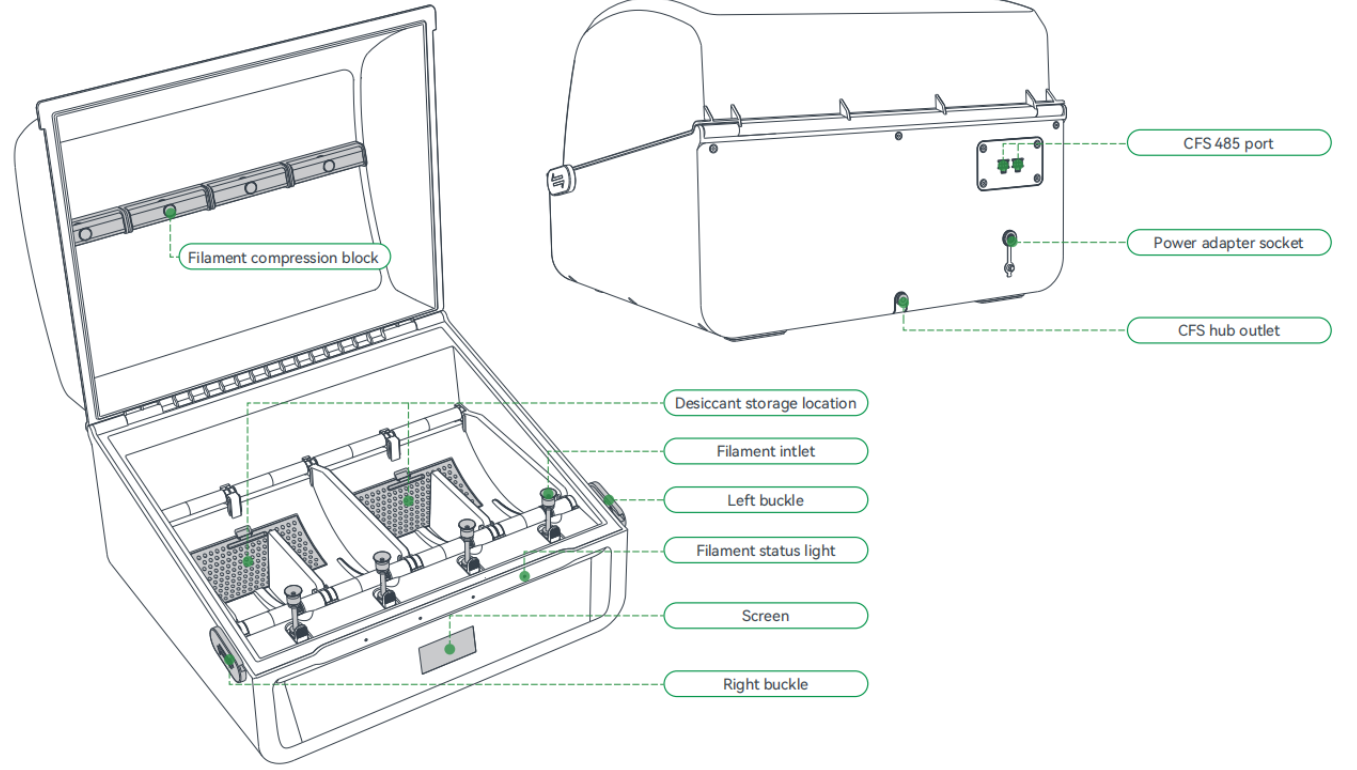
Filamet inlet
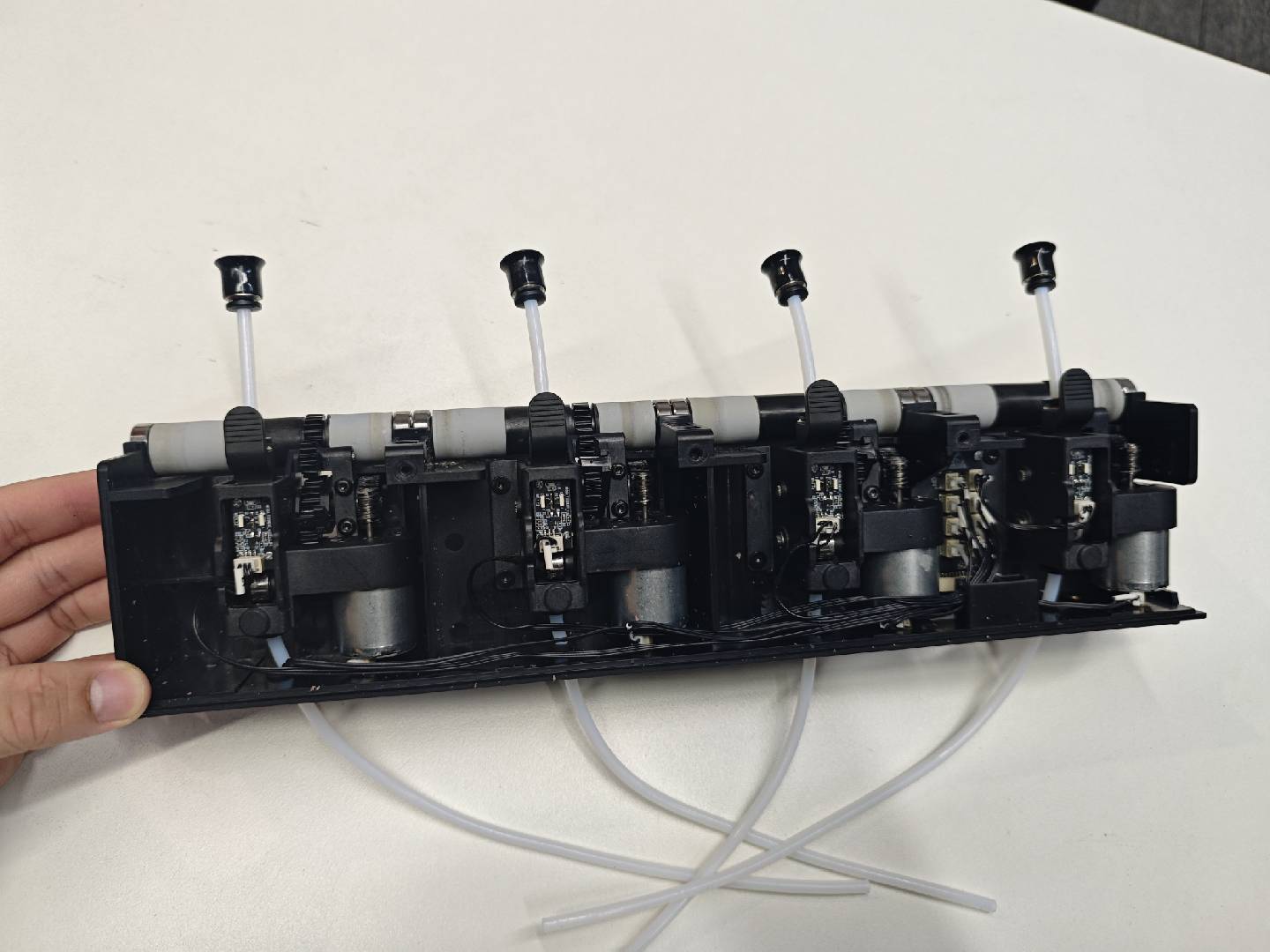
Hub
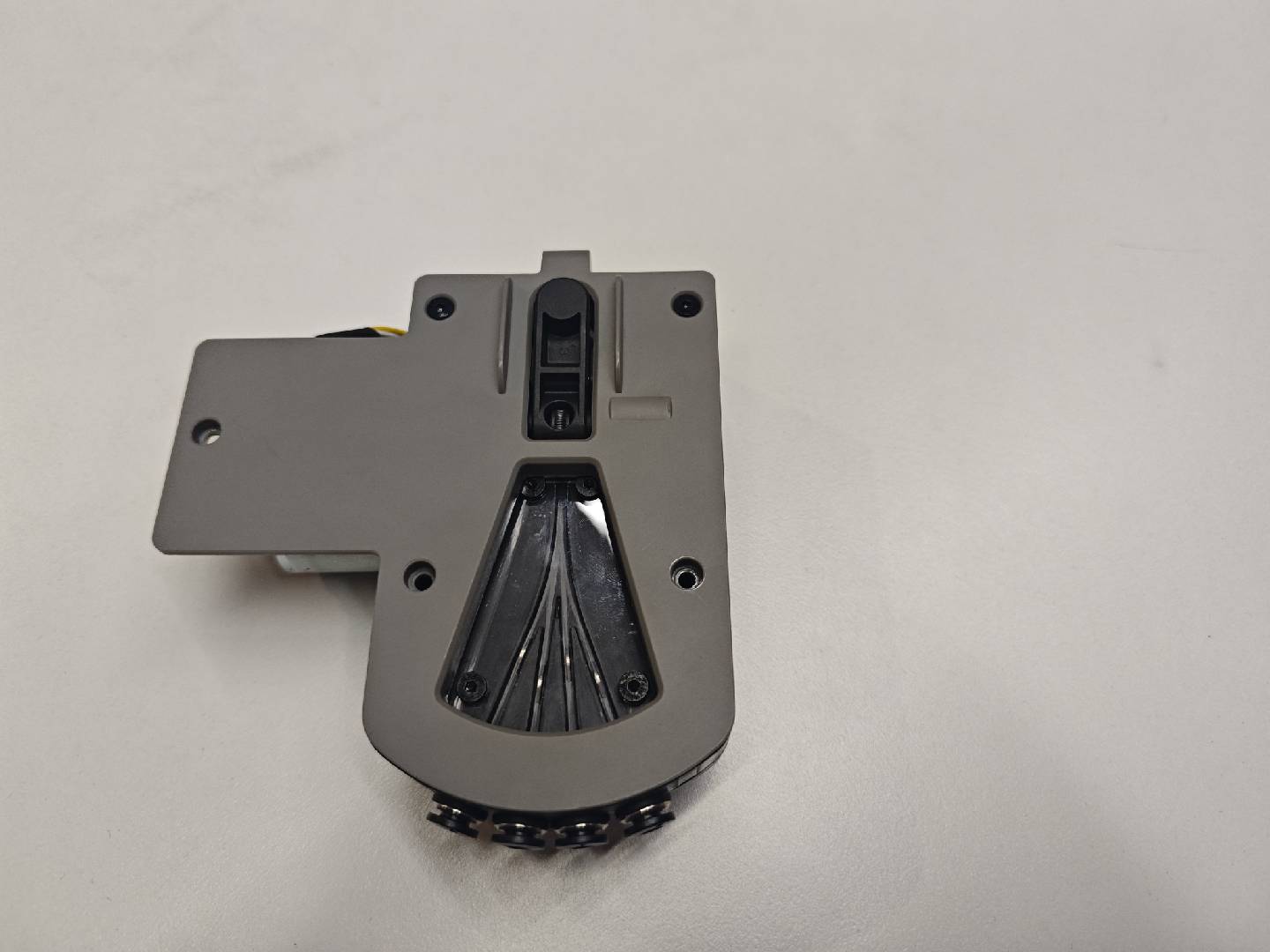
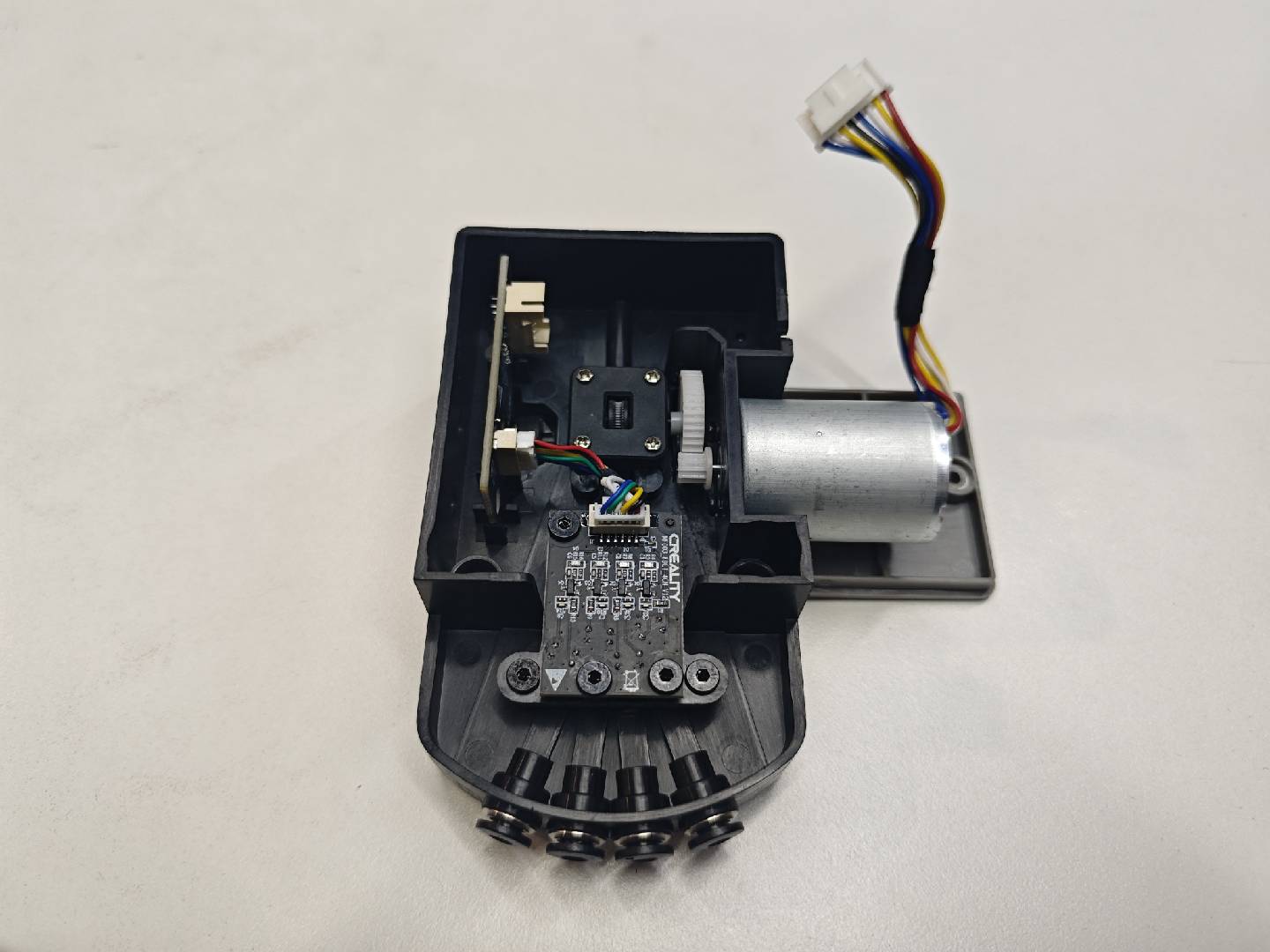
Buffer
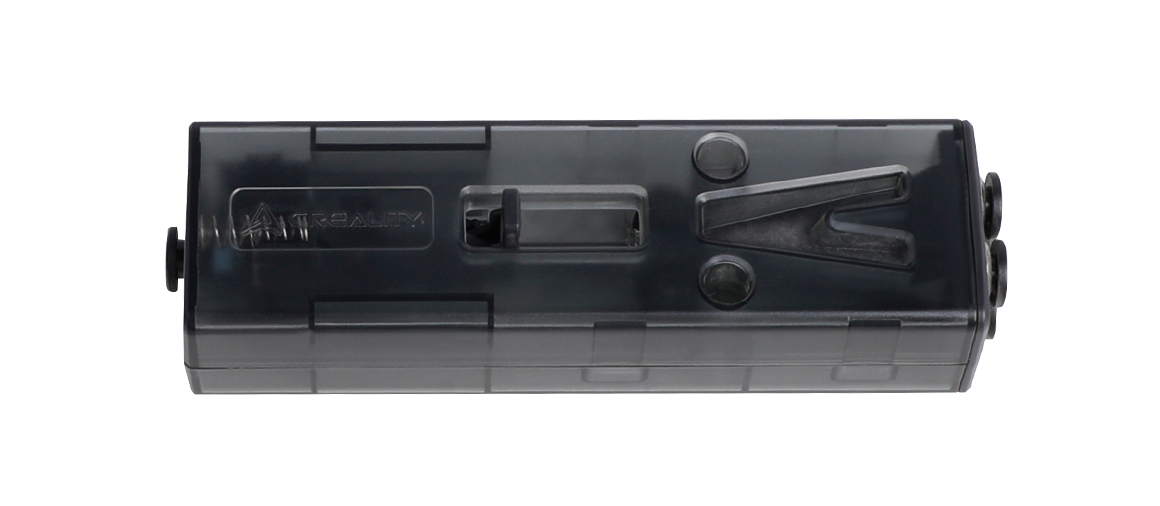
Cutter Extrusion
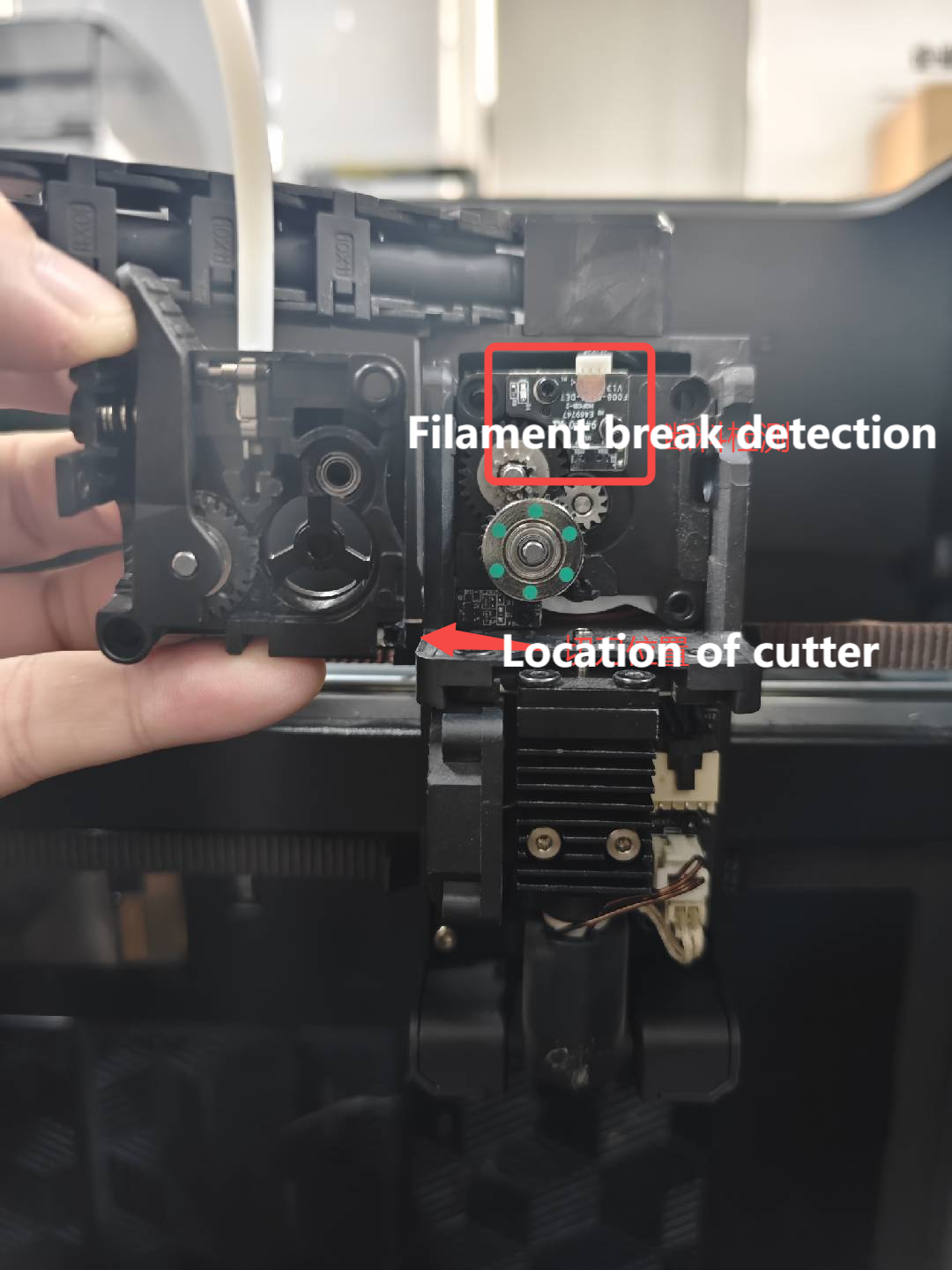
¶ 2. How does CFS connect the printer
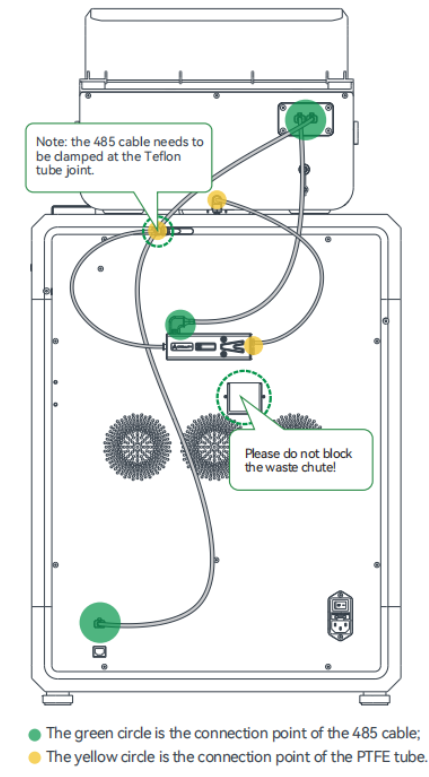
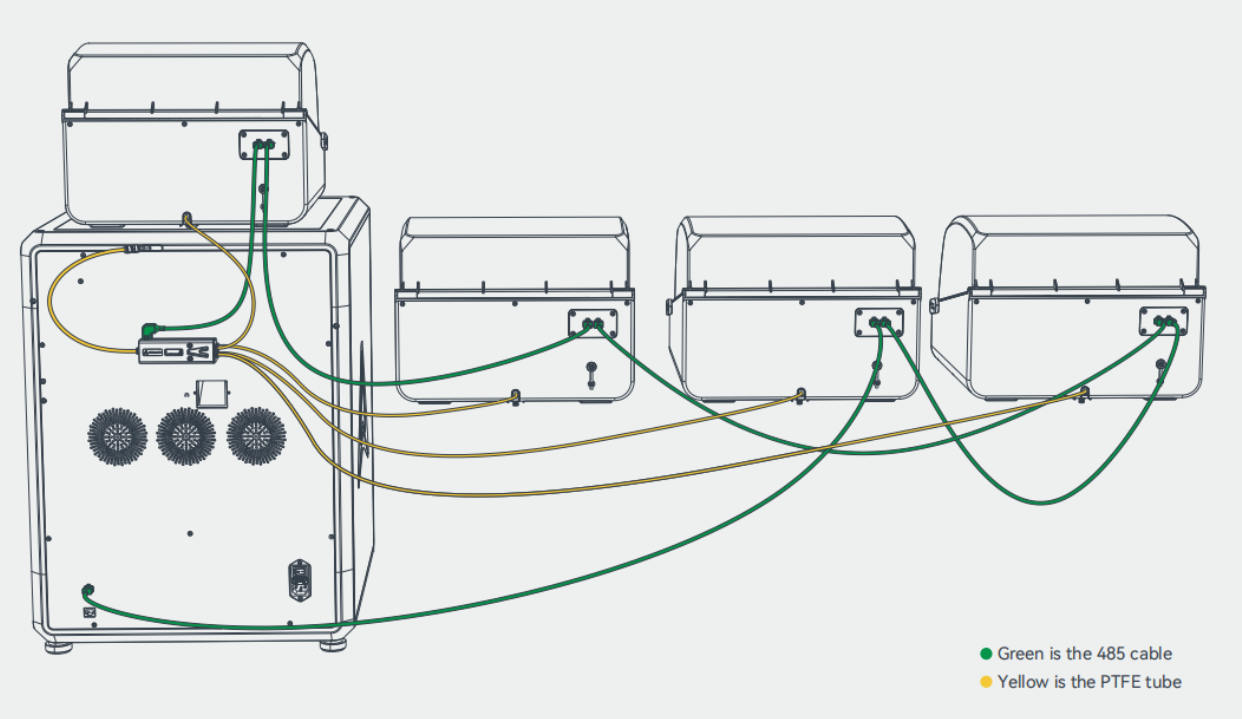
¶ Pre-feeding filament
In the idle state of CFS, after inserting the filaments into the feeder, the feeder will send the filaments to the hub, until it is detected by the hub sensor and then pulled back.
¶ Purpose:
- Provide interactive feedback to users when inserting filaments;
- Tighten the filaments on the spool to ensure that the filaments on the tray are not loose;
¶ Filament break detection
- Single-color printing:
The logic is the same as single printer printing, especially filament break detection. When the extruder detects no filament, the printer will report filament run out and needs to insert new ones. If you start the refilling function, the printer will refill filament automatically. - Multi-color printing:
A special case of multi-color printing: the last section of filament has been removed from the spool into the CFS.
If the filament needs to be replaced during printing, the printer will directly flush the remaining filament. Another slot's filament is switched to print after flushing.
The screen will pop up that filament "runs out", and the old one is being flushed.
¶ Automatic Refill
When the filament in a slot of the CFS is ran out, the system will default automatically to select filaments with the same properties ( including filament brand, filament type,filament color, printing temperature, etc). Please configure the filament information before printing.
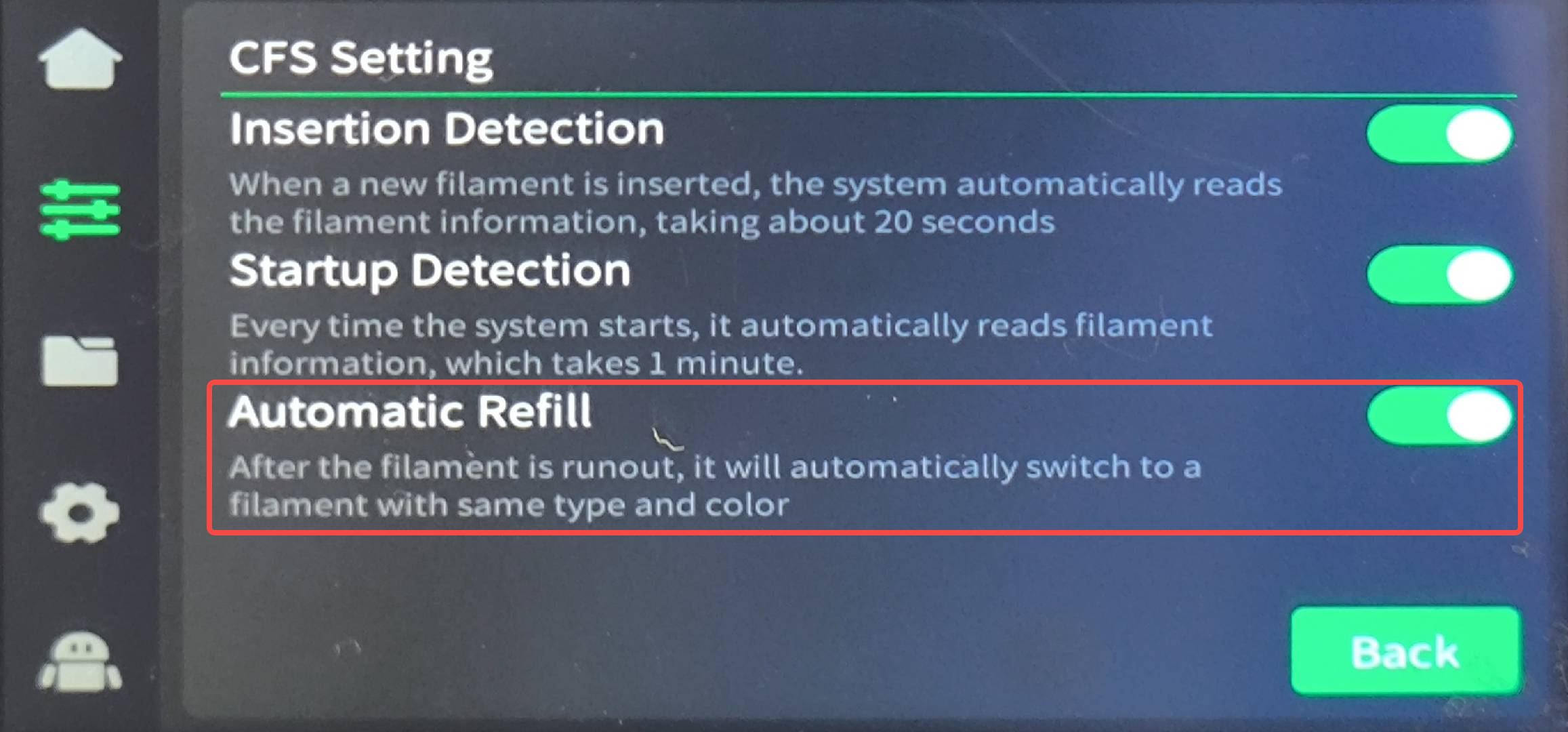
¶ RFID Recognization
CREALITY's official RFID filament roll is equipped with RFID tags on both sides, and there are two RFID-reading circuit boards on the CFS that can read the filament information. During pre-feeding, the spool rotates and the RFID tags on the RFID circuit board and filament's RFID tags read the information. The following information is obtained after the RFID filament serial number is analyzed:
- RFID filament serial number
- filament code
- Color value of filament
- Length of filament
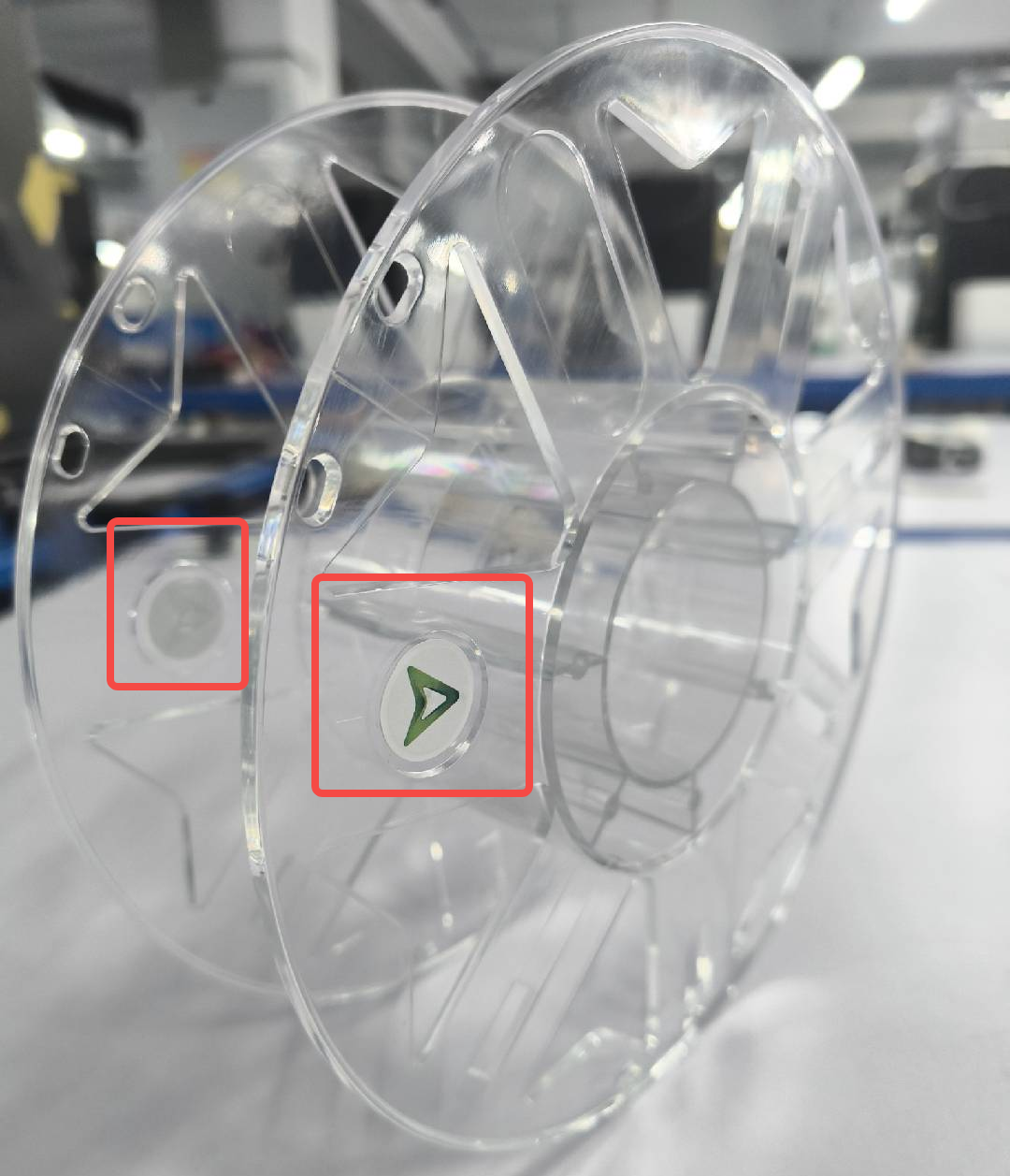
The RFID reading function can be set on the screen to detect at Insertion/Startup Detection. If " Insertion Detection " is enabled, the RFID reading function is performed after pre-feeding. Similarly, with " Startup Detection " enabled, after each restart of the printer, it will also start reading the RFID of each slot in turn.

You can also manually click on the number above each slot on the screen/slicing software for RFID reading.
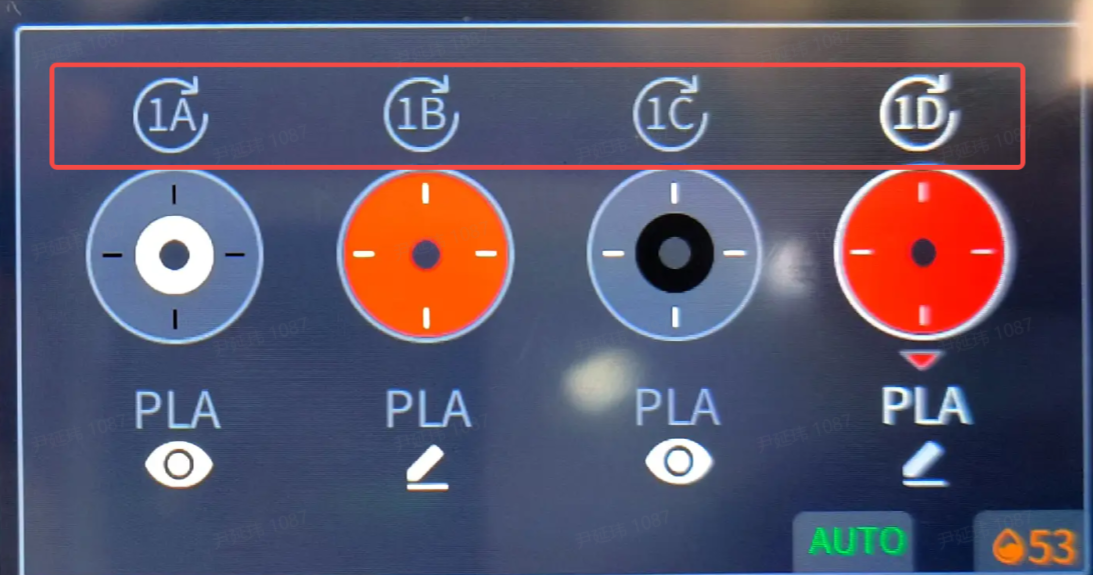
¶ Residual Estimation
The RFID reading process also allows residual estimation of the filament roll.
The working principle is to estimate the percentage of remaining filament on the spool by the length of the one sent out after the RFID filament tag on the spool is turned around.
The default value for a complete 1kg filament roll is 100%
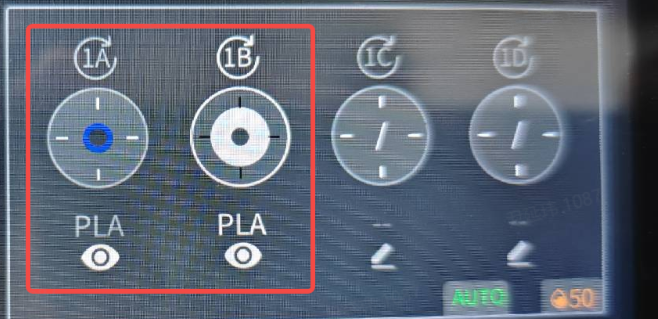
¶ Filament Mapping
When a multi-color printing task is initiated, if no filaments of the corresponding color are available, the model is automatically matched to the ones of the closest color from the multi-color box.
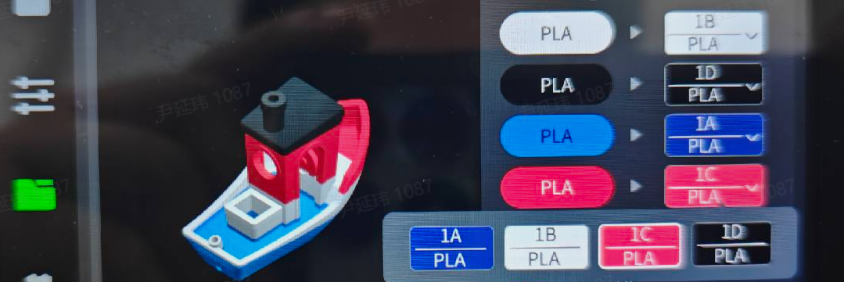
¶ Temperature/ Humidity System & CFS number
The CFS multicolor box is equipped with a high-precision temperature and humidity sensor, which can detect the real-time temperature and humidity inside the box through the display screen. If there are multiple CFS boxes, different CFS will be numbered on the right side.
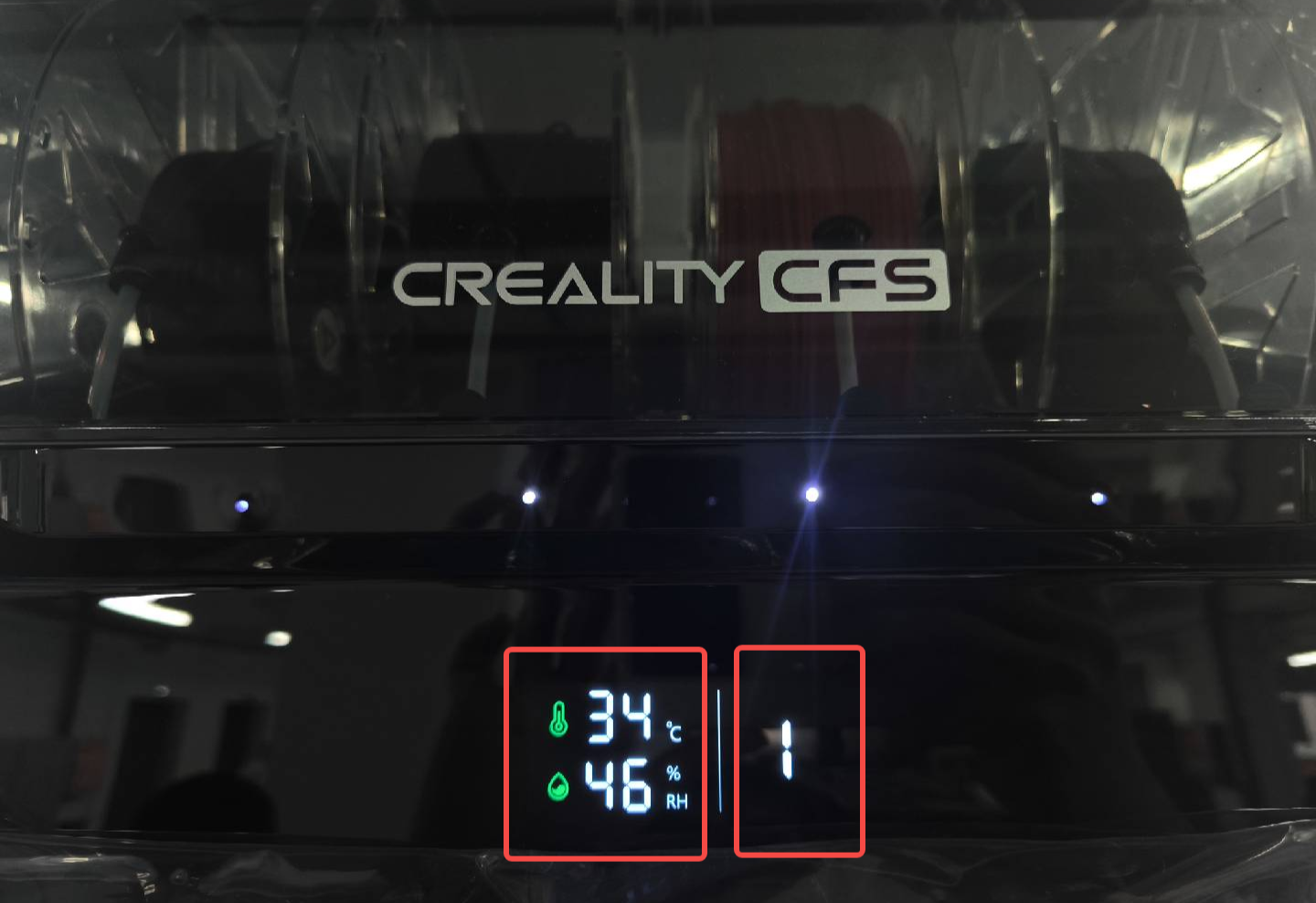
A description of the humidity range of the filament can be found on the filament information interface of the K2 Plus.

There are two desiccant storage locations under the slot of the CFS multi-color box, which can place desiccant to absorb moisture in the slot after capping. It should be noted that regular manual replacement of desiccant is required to prevent desiccant failure.
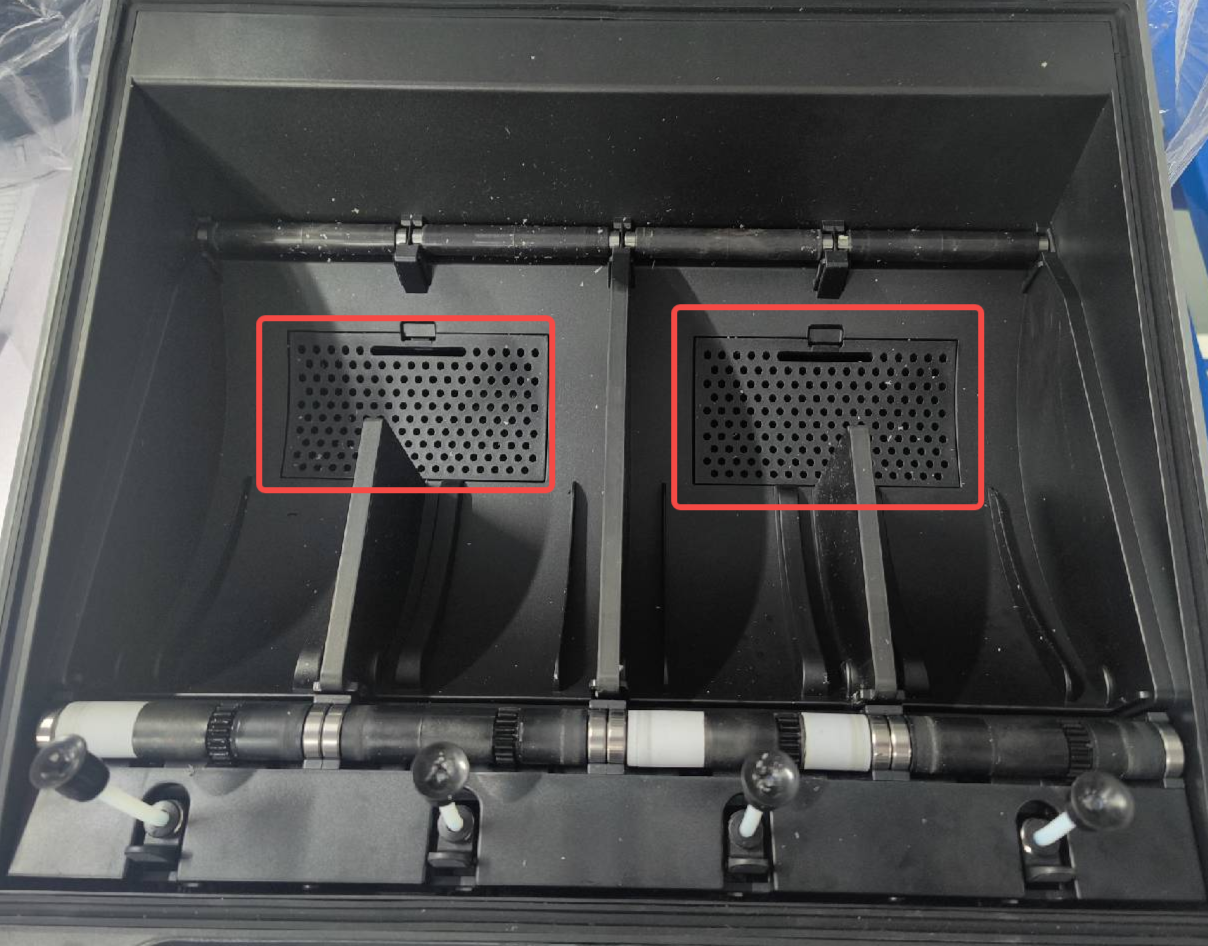
¶ CFS Workflow:
¶ Replace Filament (load & unload)
During filament loading process, the feeder is responsible for sending the filament line to the hub. After the mileage wheel of the hub calculates that the filament is sent out for a short period, the feeder stops working, and then the filament is sent to the extruder by the hub motor.
During filament unloading process, the feeder and the hub motor works at the same time. The feeder is responsible for driving the spool to turn, and the hub motor pulls back the filament until it retracts to the CFS.
¶ Automatic Feeding
When the CFS is fed to the extruder and is successfully extruded, the feedback value of the buffer is used to assist in feeding or retraction. When the feeding process encounters resistance, the slider of the buffer will be pushed to the right side, and when the filament is consumed by the extruder, the slider will return to the left side.
The power mode only determines whether to feed according to the signal feedback of the buffer, and has nothing to do with whether there is currently a printing task.
¶ Other Function--Status Indicator
CFS Status indicator Explaination
¶ Screen
The screen displays the CFS number and the temperature and humidity information in the box